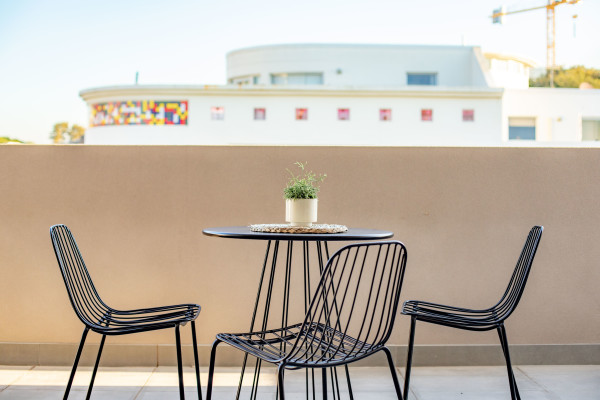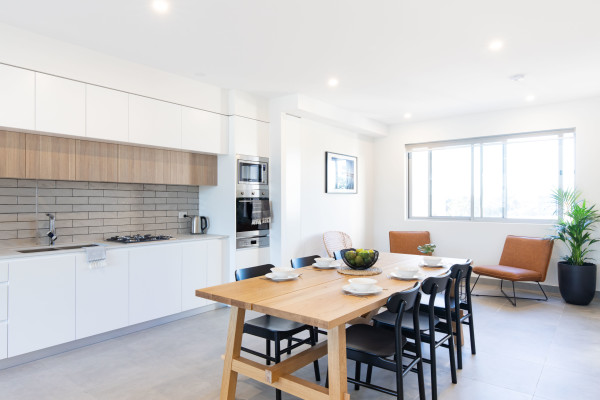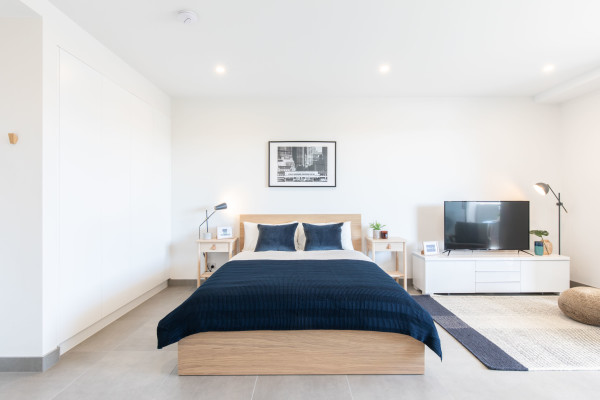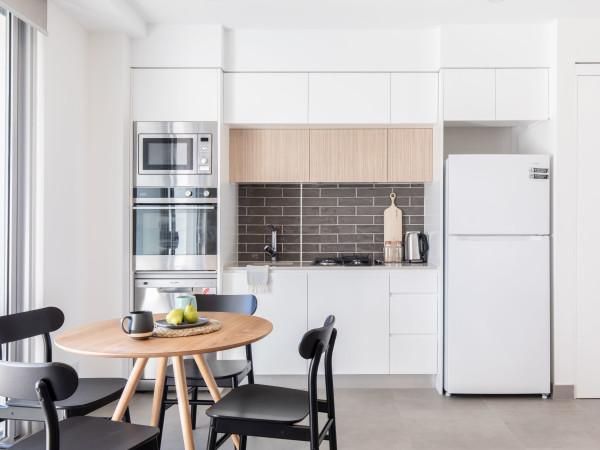What is co-living?
A modern apartment with all inclusive bills, free internet and gym and funky communal areas to hang out with friends. Let’s not forget the provision of a weekly linen wash and a professional cleaner. Welcome to Purpose Built Student Accommodation (PBSA), the new frontier.
 Hmlet communal balcony
Hmlet communal balcony
You may have heard about the new phenomenon “Co-living” or PBSA. It’s been named as a response to the housing crisis and is helping expanding cities to build up instead of out. Key perpetrators of urban sprawl in Australia, Sydney and Melbourne, have seen an influx of PBSA operators, with Hmlet at the helm of co-living leaders in Australia. Hmlet Australia Managing Director, Chrystan Paul, remarked that it is Australia’s “swelling urban population which is feeding the need for community-oriented living.”
So what is co-living or PBSA? In simple terms, it’s student accommodation for adults. But the perks and the ammenities are top class and your flatmates might not necessarily be students.
One of Hmlet’s first residents, Weng Pui said it’s the convenience that he loves most about Hmlet “everything is ready when you move in; internet, utilities, furniture, utensils, washing, fridge and plates…it really took away a lot of overhead cost and time you’d otherwise need to settle in.”
 Hmlet communal kitchen
Hmlet communal kitchen
At Flatmates we have a vision to create the best shared living experiences and part of this is expanding into different areas of the shared living world and emerging markets. Shared living is no longer for students filling up a flat. As home ownership slips further and further away for many of the population, more and more citizens are looking at other ways to live. Results from Flatmates National Share Accommodation Survey found that 73% of respondents rent in a share home as they can’t afford to live by themselves.
 Hmlet studio
Hmlet studio
Despite its name sake, PBSA isn’t just for students. Given the provision of numerous amenities and the close inner-city location, it’s a real draw card for working professionals, those new to a city and millennials who travel a lot for work. Being a masters’ student in Sydney with not much time for domestic duties, Weng was a fan of the cleaning services and fresh weekly linen, declaring that “everything just works.”
Weng remarks that the community interaction was a massive draw card for him and one of the main reasons he decided to stay living at Hmlet for the remainder of his time in Sydney. “The Hmlet team are really passionate about building a community, and that’s a really unique proposition. I moved to Sydney knowing nobody outside of my work circle – and to be able to have a network of pretty brilliant people whom I’d never have gotten to know elsewhere, I find that particularly special.”
 Hmlet studio
Hmlet studio
One of the negatives of co-living from critics is that investors are building lonely one-bedroom cells for international students, but Weng states that isn’t the case. “We have a little group chat and the Hmlet team organises weekly community activities too. Everyone has been really nice and respectful.”
Hmlet’s unique offering also looks to create weekly and monthly community events, either in the communal spaces within their properties or external road trips and events.
Hmlet, hailing originally from Singapore, is one of the leaders in PBSA in Australia, although the concept of co-living is fairly new here. Other large players in this space within Australia are Iglu, UKO and Scape, all offering slightly different propositions but all falling under the same category of co-living.
